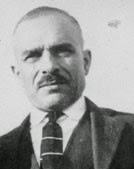 |
| Our determined guide, Daniel |
I’ve read and edited plenty of stories about working
conditions in the cruise industry.
A common theme is that the sea lanes provide cruise lines a
detour around Western labor regulations, allowing the industry to extract
maximum work for minimum pay and scant benefits. This is often cited as the
reason so few Americans are employed on board.
I got a somewhat different perspective last week, however,
when my wife and I took an impromptu cruise from South Florida to Mexico. It
was our first cruise since our honeymoon trip to Bermuda 37 years ago, and it
was so much fun that we’re ready to sail off again any time.
The crew contributed to our enjoyment in a big way, not only
because we liked being served (who wouldn’t?) but because they were unfailingly
friendly and professional even late into a very long and obviously hard day.
Raul from Peru, Tatiana from Ukraine, Eddie from the
Philippines and so many others spoke enthusiastically about their jobs, and
they were clearly thankful for the opportunity to see the world, meet
interesting people and hone skills that would serve them well regardless of
their next step.
I know that they’d be foolish to tell a stranger they hate
their jobs, but I’ve interviewed enough people to know when someone’s giving me
a perfunctory answer. This was the real deal.
All of them spoke English well, and some could probably teach
it. We found Sonya from Serbia behind the counter of the on-board jewelry shop.
She wouldn’t seem out of place in a similar role on Palm Beach, or Manhattan.
When we asked how she learned English so well, she credited
her parents with forcing her to attend language classes as a child. “I hated
it,” she said. “Now I thank them every day.
We heard many examples of such determination and sense
of purpose. They served as a sharp and depressing contrast to the stories of
young Americans who seem content to sleep on Mom and Dad’s sofa.
We encountered one of the most inspiring examples on shore at
Costa Maya on the southern-most reach of Mexico’s eastern coast just north of
Belize. The region forms Mexico’s newest state, carved from jungle less than 50
years ago. There’s still not much commerce there except pineapples and tourism.
The Mayan ruins are a big draw, and we got an excellent sense
of them from our young guide, Daniel. He learned the history from his father,
who is also a tour guide. Judging by the number of folks hawking sombreros from
roadside huts, squiring tourists on an air-conditioned bus is not a bad job in
those parts.
But Daniel told us he’d just graduated from the state
university with a degree in architecture. His next goal is a master’s degree,
and he hopes to earn one at an American university so he can see and learn more
of the world beyond Costa Maya.
So he is applying for scholarships, although he knows he will
have to work to pay the rest of his expenses. Even before tackling those hurdles, he was
about to take an English proficiency exam to show that he could learn in an
American classroom.
He was clearly nervous about his chances, but I assured him
he’d do just fine. He seemed relieved when I explained that I don’t know much
about anything else, but I do have some expertise in the English language. I
gave him my email address and asked him to let me know how he makes out.
I was particularly struck by all this because of a recent
story in the New York Times about America’s declining labor participation rate,
a euphemism for more-or-less voluntary unemployment: Millions of prime-age men and women aren’t working because they don’t want to.
We’ve lost so many high-paying, skilled jobs in so many
industries that many of these folks have no option except work that pays much
less than they once earned, or think they’re worth.
So instead of working they
stay home and wait, but what are they waiting for?
Meanwhile, the ship we sailed on employed more than 1,100 crew
members from 47 countries, probably for less money and more hours than jobs that so
many Americans consider beneath them.
I wonder how long we can afford to think that way while the
rest of the world steams ahead?





.jpg)



